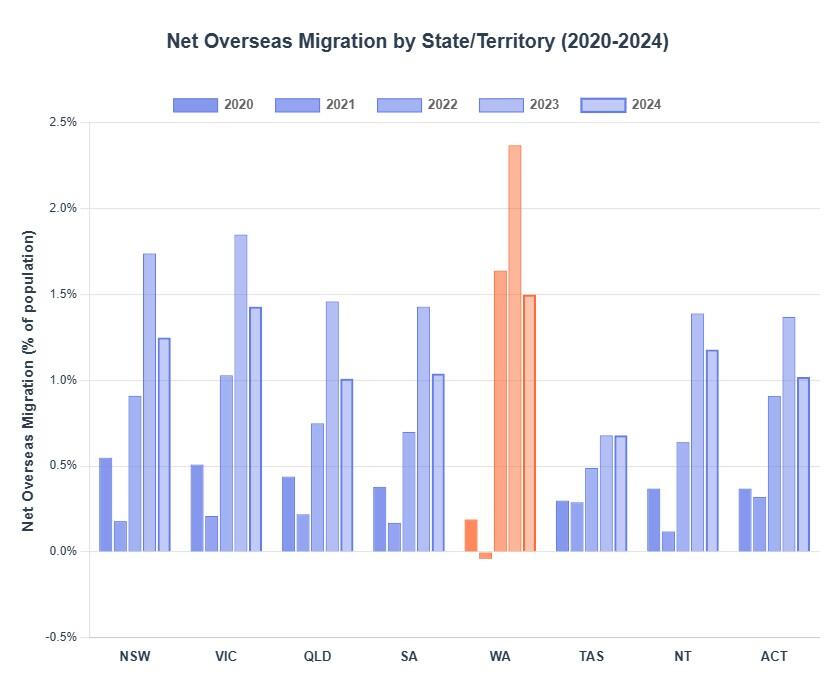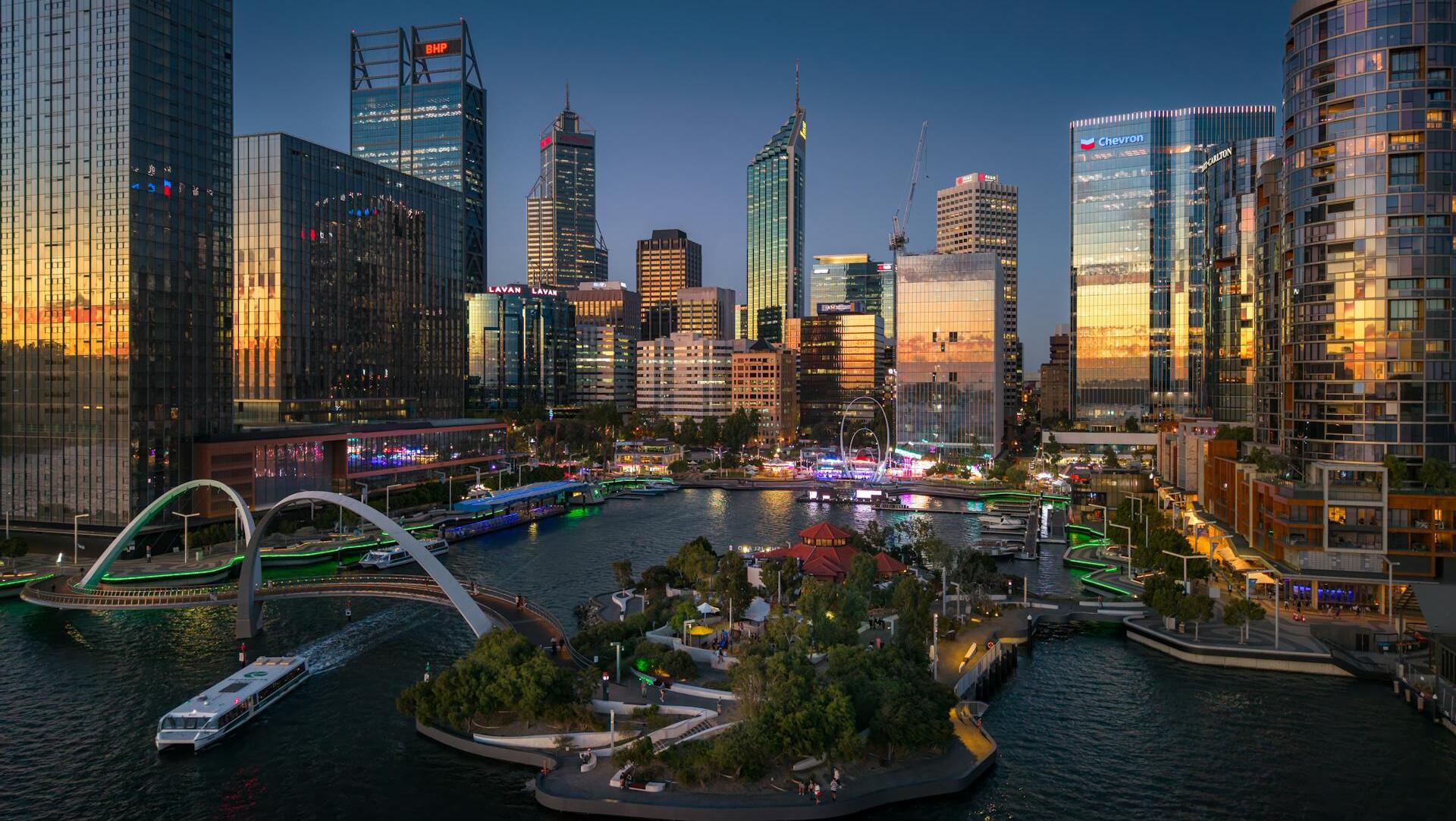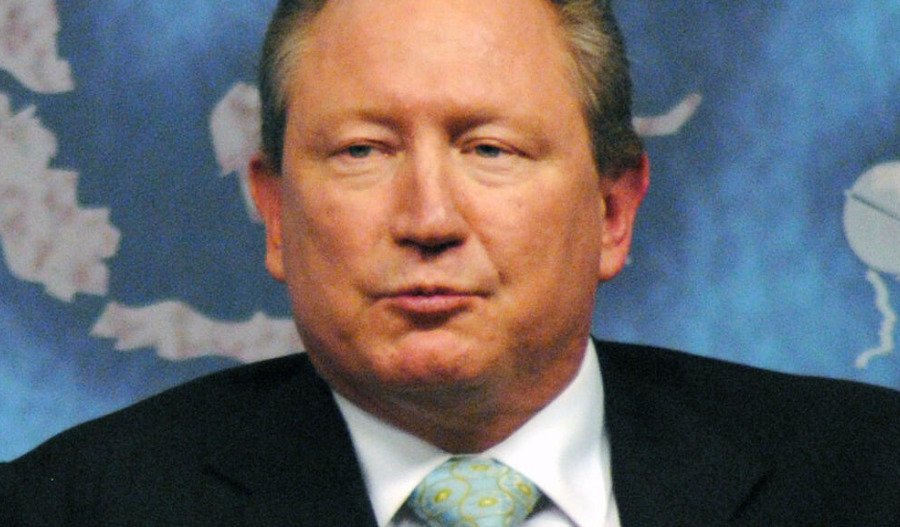Western Australia, with a nation-topping population growth rate of 2.4%, has hit a milestone of three million residents. Could the increases be part of fundamental shifts that position Australia's largest state as an economic and regional power centre? Or are they just down to cyclical mining demand?
Latest data from the Australian Bureau of Statistics (ABS) shows WA's 2.4% population growth rate is the nation’s fastest, yet it’s only fourth in population terms - an indicator of the deeper structural forces at play.
Despite WA's primary attraction, the growth data suggests WA’s allure extends beyond the high wages of its valuable resources sector.
Just look at its economic outperformance - 5.3% growth against a national average of 2.4%, coupled with the nation’s lowest unemployment rate at 3.4%.
A wage premium of 56% above the national average creates a powerful incentive too.
Mind you - at the end of last year WA’s Department of Energy, Mines, Industry Regulation and Safety (DEMIRS) had a whopping $169 billion worth of projects on the books, led by iron ore expansion and downstream lithium processing.
Not just mining
But the stark difference in median weekly earnings of $2,649 compared to $1,700 nationally represents more than just an attractive pay cheques for a job in the mines - it’s a sign of WA’s emergence as a high-value economic ecosystem.
Rather than an overreliance on the mining industry's cyclical prosperity making the state vulnerable to outside pressures, the growth trend may be a sign of systematic competitive advantages built on it - pulling in talent from across the east coast and internationally.
ABS data on interstate migration to New South Wales last year showed a net loss of 28,118 people - compared to WA’s net gain of 12,612.
The top three migrants to WA last year were Bhutan (7,190), India (7,050) and the UK (4,750), entering with Australia's highest median age of 27.3 years - indicative of targeted skilled immigration pathways.

And the critical minerals processing signals WA's value-chain expansion from being just a raw materials exporter - three newly built lithium refineries either operating or under construction attract a range of different skillsets.
Ongoing investment
With a net debt position of 9.7% of Gross State Product, WA's buoyant fiscal capacity opens it up to growth and investment opportunities, as other states face increasing constraints.
The state government is acutely aware of this, with Perth's $10.5 billion METRONET program - representative of essential economic infrastructure enabling population absorption - almost complete.
WA's demographic transformation reflects broader shifts in global economic geography towards resource-rich regions capable of supporting energy transition technologies.
Defence planning increasingly recognises northern Australia as a strategic asset rather than vulnerabilities. Population growth supporting the development of dual-use infrastructure to enhance both economic and defence capabilities.
Geopolitical implications extend beyond domestic policy to Australia's fundamental positioning within Indo-Pacific power dynamics.
Growth challenges
It's not all gravy for WA though - with a COVID hangover exacerbating a housing crisis that's seen a whopping 76% increase in rental costs over the past five years and resources sector demand for an additional 40,000 workers, according to research from Curtin University.
“Demand is significantly outpacing supply. While WA delivered over 20,000 housing completions in 2024 - the highest in seven years - it remains 4,000 dwellings short of the implied Housing Accord target,” the university's Housing Affordability in Western Australia 2025 report noted.
“Compounding this shortfall are acute capacity constraints in the construction sector, exacerbated by builder insolvencies, labour shortages, rising material costs, and delays between approvals and completions.”
These issues are being worked on. The overall synthesis of population growth, economic dynamism and geopolitical significance could grow WA to become Australia's most strategically significant state in terms of attractiveness and regional influence.



